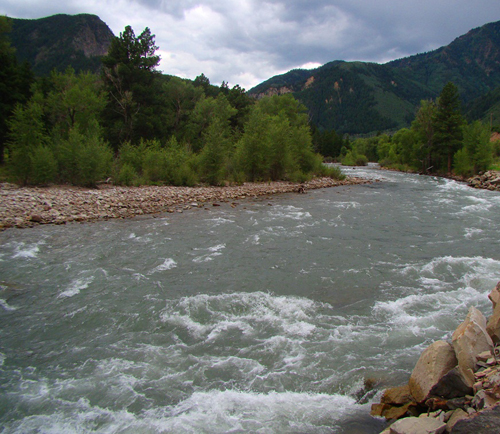Wednesday, October 28 2015
By now you’ve probably heard that climatologists are predicting that the winter of 2015-2016 will be unusual because of “El Niño.” An El Niño weather pattern is a periodic warming of the central and eastern equatorial Pacific "There's no longer a possibility that El Niño wimps out at this point. It's too big to fail," Bill Patzert, a climatologist for NASA's Jet Propulsion Laboratory, told the LA Times. "And the winter over North America is definitely not going to be normal." Most farmers and ranchers in the West are hopeful that these predictions are correct, especially those in California and other states that have been plagued by years of drought. Gold miners are generally hopeful because lots or rain and flooding moves gold around and re-deposits it. While terrible property damage can occur, depending on the severity of the storms, flooding can cause the renewal and reformation of pay streaks and refill crevices with gold. If flooding does move around some gold over the winter, there will be great opportunities in many Western gold-bearing areas come next spring and summer! The consensus of many experts is that El Niño will persist through winter 2015-2016, before weakening, as most of these weather patterns typically do, in spring 2016. Mike Halpert, the deputy director of the Climate Prediction Center, said this El Niño is the second strongest he's seen at this time of the year. "The atmospheric response to the equatorial sea-surface temperature anomalies, measured by their atmospheric ENSO index (AEI), is the strongest event since at least 1948," said Dr. Todd Crawford, chief meteorologist at WSI, the professional division of The Weather Company. According to NOAA (National Oceanic and Atmospheric Administration is a federal agency focused on the condition of the oceans and the atmosphere), the winter of 1997 was the second warmest and seventh wettest on record. Severe weather included flooding in the southeast and California, an ice storm in the northeast, and tornadoes in Florida. During that winter, Oklahoma had some its warmest temperatures and wettest weather. Of course California miners didn’t advocate for the destruction caused by the floods, but they were pretty happy with the resulting redistribution of gold in rivers and areas that previously had been “played out.” Mother Nature has a way of replenishing gold! Looking at past moderate-strong El Niño, here are the predictions for temperatures and precipitation from late fall 2015 through spring 2016 across the country: Wetter: Southern U.S. from California to the Carolinas then up parts of the East Coast Drier: Parts of the Ohio Valley, Great Lakes, Northwest and Northern Rockies Cooler: Desert Southwest, Southern Plains, northern Gulf Coast Warmer: Northern tier of states from the Pacific Northwest to the Northern Plains, Great Lakes, and Northeast The scientific evidence for El Niño seems strong right now, but it’s still a little bit early to say for sure about the strength of the upcoming storm patterns. Still, if you’re planning your prospecting trips and activities for the next six months, you might want to consider the potential golden bonanza an El Niño might bring! Comments:
Hi - well written article regarding Western weather forecast for the coming winter season. I am the editor of the Portland Gold Prospectors, Inc chapter newsletter and would like your permission to post it in our November newsletter. Do I have your permission to share it with our readers? Thank you. Dave
Posted by Dave Chiara on 11/02/2015 - 09:30 AM
|






